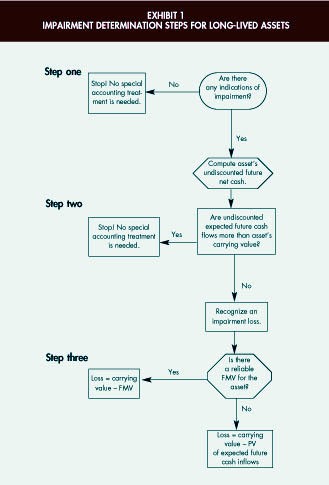Goodwill Impairment Testing
Post on: 31 Май, 2015 No Comment

FASB Issues Simplified Standard for Goodwill Impairment Testing
The Financial Accounting Standards Board (FASB) issued revised standards for goodwill impairment testing designed to simplify and ease costs. The amendments don’t change how a public or private company measures a goodwill impairment loss, but they may excuse some companies from performing the traditional two-step impairment testing.
IMPAIRMENT TESTING REQUIREMENT
Under U.S. Generally Accepted Accounting Principles (GAAP), goodwill is considered “impaired” when the “implied fair value of goodwill ” in a “reporting unit ” of a company is less than its carrying amount, or book value, including any deferred income taxes. GAAP requires companies to test goodwill for impairment annually—and between annual tests in certain circumstances—using a two-step process:
1. The company calculates the fair value of the reporting unit and compares that amount with the carrying amount of the unit, including goodwill. If the carrying amount exceeds the fair value, the company must perform the second step.
2. The company measures the amount of the goodwill impairment, if any, by comparing the implied fair value of the reporting unit’s goodwill with the carrying amount of that goodwill.
The company must then recognize any impairment as a loss on its income statement.
NEW IMPAIRMENT TESTING OPTION
For the first impairment-testing step, previous guidance allowed a company to carry forward its fair value calculation from one year to the next if certain criteria were met. The new amendments no longer allow this practice. They do, however, give companies the option of making a qualitative evaluation to determine whether they must take the first step of calculating a reporting unit’s fair value.
If a company chooses this option, it must assess whether relevant “events and circumstances” (see next section) make it “more likely than not” (meaning a likelihood of more than 50%) that the fair value of the reporting unit’s goodwill is less than its carrying amount. If the company determines it’s not more likely than not that fair value is less than the carrying amount, it doesn’t need to perform the two-step impairment test.
A company can, however, choose to skip the qualitative assessment and proceed directly to the first step of the impairment test. Companies that do so can resume conducting the qualitative assessment in any future period.
RELEVANT EVENTS AND CIRCUMSTANCES
The amendments provide a nonexclusive list of events and circumstances that a company should consider between annual impairment tests to make the more-likely-than-not determination:
• Macroeconomic conditions (such as a deterioration in general economic conditions, limited access to capital and fluctuations in foreign exchange rates),
• Industry and market considerations (including a deterioration in the environment in which the company operates, increased competition, changes in the market for the company’s products or services, and regulatory or political developments),
• Cost factors (such as increases in the costs of raw materials, labor and other items that have a negative effect on the company’s earnings and cash flow),
• Overall financial performance (including negative or declining cash flow and declines in actual or planned revenue or earnings as compared with previous periods’ actual and projected results),
• Other relevant company-specific events (such as changes in management, key staff, strategy or customers; potential bankruptcy; or litigation),
• Events affecting the reporting unit (for example, changes in the composition or carrying amount of net assets; a more-likely-than-not expectation of selling or disposing of all or part of the reporting unit; or recognition of a goodwill impairment loss in the financial statements of a subsidiary of the reporting unit), and
• For public companies, a sustained decrease in share price.
Note: None of the examples listed are standalone events or circumstances that automatically require an entity to perform the first step of the impairment test. A company should consider the extent to which each adverse event or circumstance could affect the comparison of the reporting unit’s fair value with its carrying amount, giving greater weight to those that most affect the fair value or the carrying amount of the unit’s net assets.
The counterweight of positive and mitigating events and circumstances (none of which create a presumption against performing the first step) also should be given consideration. And a company can identify other relevant events and circumstances, such as whether it has a recent fair value calculation for the reporting unit.
ZERO OR NEGATIVE CARRYING AMOUNTS
When a company’s reporting unit has a zero or negative carrying amount, the factors above should be considered to determine whether to perform the second step of impairment testing. In such a case, the company wouldn’t perform the first step, but it still must determine whether it’s more likely than not that goodwill impairment exists.
If impairment is more likely than not, the second step of testing must be performed. In making the more-likely-than-not determination, the company should also consider whether significant discrepancies exist between the carrying amount and the estimated fair value of the reporting unit’s assets and liabilities, as well as the presence of significant unrecognized intangible assets.
EFFECTIVE DATES
The amendments are effective for annual and interim goodwill impairment tests performed for fiscal years beginning after December 15, 2011. Early adoption is permitted. If you have questions regarding impairment testing requirements or how to conduct the new qualitative assessment, call CRI’s professionals.














